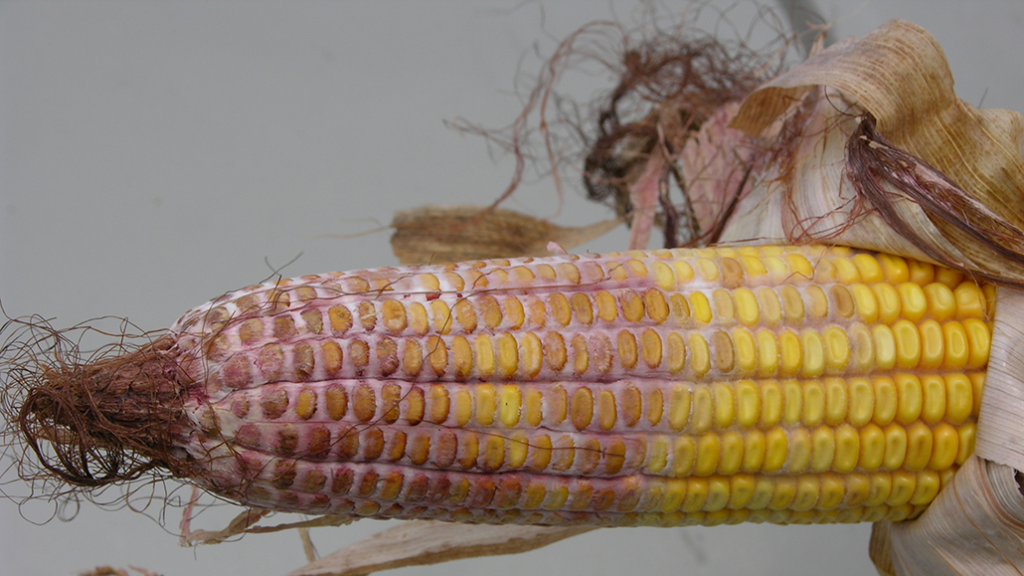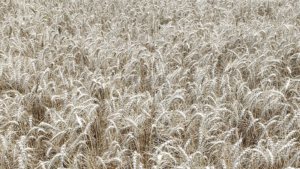Testing for DON
ACHIEVING A CONSISTENT, ACCURATE DON TEST RESULT

DEOXYNIVALENOL (DON) IS a mycotoxin naturally produced by the fungus that causes Gibberella ear rot in grain crops such as corn. Infection begins through the corn silk and proliferates in warm (27 – 28° Celcius), humid weather.
Accurate and efficient sampling, detection, and quantification of mycotoxins have been challenging because the toxin is not uniformly distributed in grain, or grain samples, but is critically important as effective sampling leads to fewer false readings and better grain management during grain delivery. Following the record outbreak of Gibberella ear rot in Ontario in 2018, research at the University of Guelph identified several necessary improvements to the DON sampling protocol, intended to help with the accuracy of testing.
SAMPLNG PROTOCOL
Step 1: Collect a representative grain sample of no less than two kilograms
Mycotoxins are not distributed evenly in grain loads; therefore, multiple samples should be taken from a single load to obtain a representative two kilogram sample. Best practices for various scenarios are described below:
For delivered grain:
Before dumping, ensure at least four pneumatic probe samples are taken. Sampling should comprise the entire vertical profile of the load. Take four separate pneumatic probe samples, from different areas across delivery truck length.
For sampling while dumping grain:
Dip 250 ml cup into the continuous grain flow multiple times (20 minimum) while grain is unloaded to obtain the required two kilogram sample.
For sampling stored grain:
Be sure to sample using a probe and pull cores as deep as possible from multiple depths between the bottom and top of the probe depth. Sample in multiple locations around the bin until two kilogram sample is collected.
Step 2: Grind the two kilogram grain sample
Due to the high variability in mycotoxin content between individual grain kernels, it is crucial to take a grain sample of at least two kilogram and grind the entire sample before remixing the meal and taking the final subsample for DON testing.
Grinding an entire two kilogram sample significantly reduced the variability in results when compared to the traditional protocol of sub-sampling of whole kernels. By grinding and mixing an entire two kilogram whole grain sample, only one subsample is required to be within 20 per cent of the actual DON concentration of the grain. In comparison, 11 subsamples using the traditional DON processing methods of whole kernel samplings would be required to obtain this same level of accuracy.
Step 3: Sub-sample the two kilogram ground sample
From the two kilogram ground sample, collect a 10 – 30 gram subsample (based on the specific test kit instructions) to be used in DON dip test. It is crucial that the test kit instructions are followed accurately to reduce test kit operator error. Note that two different types of rapid tests are marketed — ELISA (enzyme-linked immunosorbent assay) and LFD (lateral flow device), both of which are suitable for on-site testing.
Step 4: DON dip Test
It is crucial that the test kit instructions are followed accurately to reduce test kit operator error. Follow the test kit manufacturer’s instructions as reagents and time exposure for the dip strips may vary. On-site operator training optimizes test kits’ accuracy. As the concentration of DON goes up in the samples taken, the variability in the test kit also increases.
Testing at the University of Guelph Ridgetown Campus confirmed the accuracy of test kits and determined that variability in results is within an acceptable range.
By following these recommended sampling steps, DON testing can have consistent and repeatable results from the grain that is being represented by the sample. Reduction of sample testing variation improves confidence in the grain sector.
Read more at www.gfo.ca/agronomy. Code of Practice
The DON testing project was funded in part through the Canadian Agricultural Partnership (the Partnership), a federal-provincial-territorial initiative. This project was also funded in part by Grain Farmers of Ontario. The research was carried out by the University of Guelph Ridgetown Campus with support from OMAFRA and the Mycotoxin Coalition (Ontario Agri-Business Association, Grain Farmers of Ontario, University of Guelph, and Ontario Ministry of Agriculture, Food and Rural Affairs). •

























